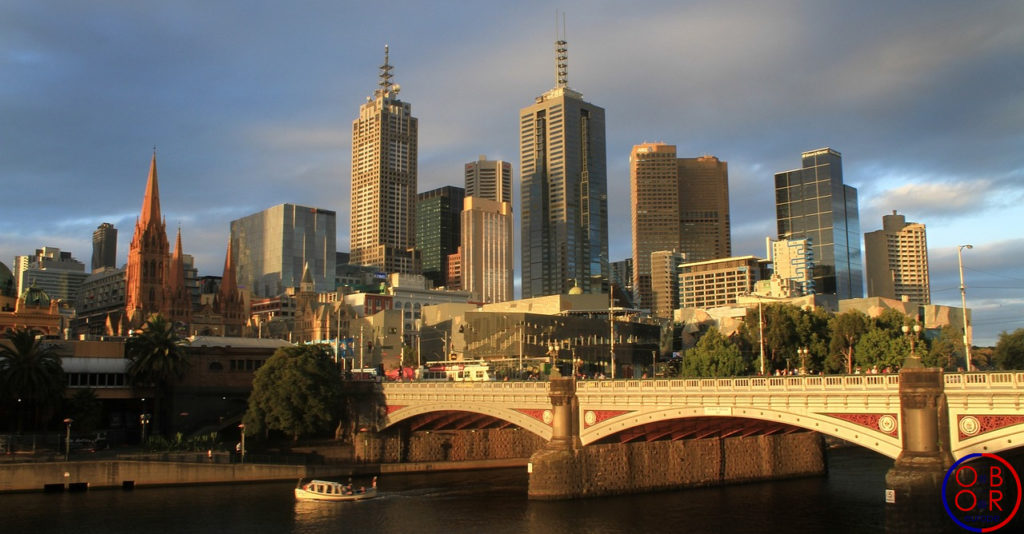by Dr. Sebastien Goulard

In October 2018, the Australian state of Victoria agreed to join in the Chinese New Silk Road initiative. A roadmap for the realization of this agreement ought to be unveiled in May 2020, but the Covid-19 crisis and certain tensions between China and Australia have delayed this event. Daniel Andrews, Prime Minister of the State of Victoria, however, announced that he would continue this cooperation with China.
The State of Victoria and the Belt and Road Initiative
In one previous article, we mentioned that the state of Victoria had already signed in October 2018, a memorandum of understanding with China to participate in the BRI. This non-binding agreement was relatively vague, and had been approved by the Australian Department of Foreign Affairs and Trade. It was supplemented in by another agreement in October 2019, which had been questioned by the federal government. In March 2020, a new version of this agreement was to be signed, but was delayed due to the Covid-19.
By joining the BRI, the state of Victoria pursues a double objective. First, it is to become the main destination for Chinese investment in Australia. According to a report published jointly by the University of Sydney and KPMG, the state of New South Wales, in 2018, received 52% of Chinese investment in Australia, compared to 27% for Victoria (which represents about 1.3 billion d ‘euros). These investments were mainly made in commercial real estate and healthcare. For the Victoria government, participation in the BRI would send a strong signal to Chinese companies to further invest in this part of Australia. Participation in the BRI would also enable the State of Victoria to better withstand the economic consequences of the Covid-19 crisis by increasing trade with China.
Another important aspect of the State of Victoria’s membership of the BRI is that of Australian companies’ development in third countries. The Prime Minister of Victoria, Daniel Andrews has understood the BRI’s concept, which not only opens Victoria to Chinese investments, but also facilitate the development of Victoria’s companies in the other regions of the new Silk road such as Pakistan or Central Asia.
The controversy
The decision made by the Prime Minister of the State of Victoria does not satisfy everyone. First, the federal government has acute reservations on this issue, arguing that this kind of decision can only be made at the federal level, and Australia has already expressed its refusal to join the Chinese initiative. According to the federal government, Daniel Andrews did not ask for authorization to sign a new agreement with China with the Department of Foreign Affairs and Trade. Furthermore, the United States, which sees Australia as a possible partner for its own connectivity project in Asia, takes a dim view of the possible participation of an Australian state in the BRI.
Some tense relations
This episode comes in a context of poor relations between Canberra and Beijing. Following the Covid-19 crisis, Australia called for an independent investigation into China’s handling of the pandemic. On the other hand, China suspended Australian beef imports, and raised tariffs by almost 80% on Australian barley. Today China is Australia’s first economic partner. The Australian economy, including agriculture, mining, and education sectors, has become very dependent on China, and some Australian leaders are concerned that participation in the BRI may increase this dependence.
The United States’ concern
In response to the possible participation of the State of Victoria in the BRI, the United States, through the voice of Secretary of State Mike Pompeo, threatened to disconnect Australia from the “Five eyes” surveillance program. Although the American ambassador to Australia pointed out that this decision was only hypothetical, it shows the concern of the United States on this subject.
First, the United States is trying to develop its own initiative the “Blue Dot Network” with Japan, India and Australia that would compete with the BRI. But, the possible participation of the state of Victoria in the BRI points the limits of the “Blue Dot Network” project, it is simply neither ambitious nor advanced enough.
Secondly, the United States is concerned about possible investments by Chinese telecom giants like Huawei in Australia and especially in the state of Victoria. Since August 2018, the Chinese company has not been allowed to develop 5G in Australia, but that could change if Canberra joined the BRI.
Limits on Victoria’s participation in the BRI
The willingness to participate in the Chinese initiative, displayed by the Prime Minister of the State of Victoria proves that the BRI is an attractive program and shows that there is still room for further connectivity between China and the rest of the world. However, the decision made by the state of Victoria highlights the divisions within Australian society over China affairs.
It is unfortunate that there is no consensus on the issue of the BRI in Australia. This initiative needs stability, and therefore should not be politicized. For all the projects to succeed, a lasting commitment from all parties is necessary.
Although for China it can be interesting to take advantage of internal divisions in a country, or in a group of countries (like the European Union) to advance its own objectives, in the long term, this approach may create distrust towards China.
Furthermore, it is a pity that the BRI issue is instrumentalized for political purpose. Because of misunderstanding of this initiative, some see it as a security project dominated by China, while it is essentially a program aimed at facilitating trade.
We can learn from this episode that participation in the BRI requires a strong coordination between national and local governments.
Share the post "Victoria, Australia and the BRI: some outlooks"
